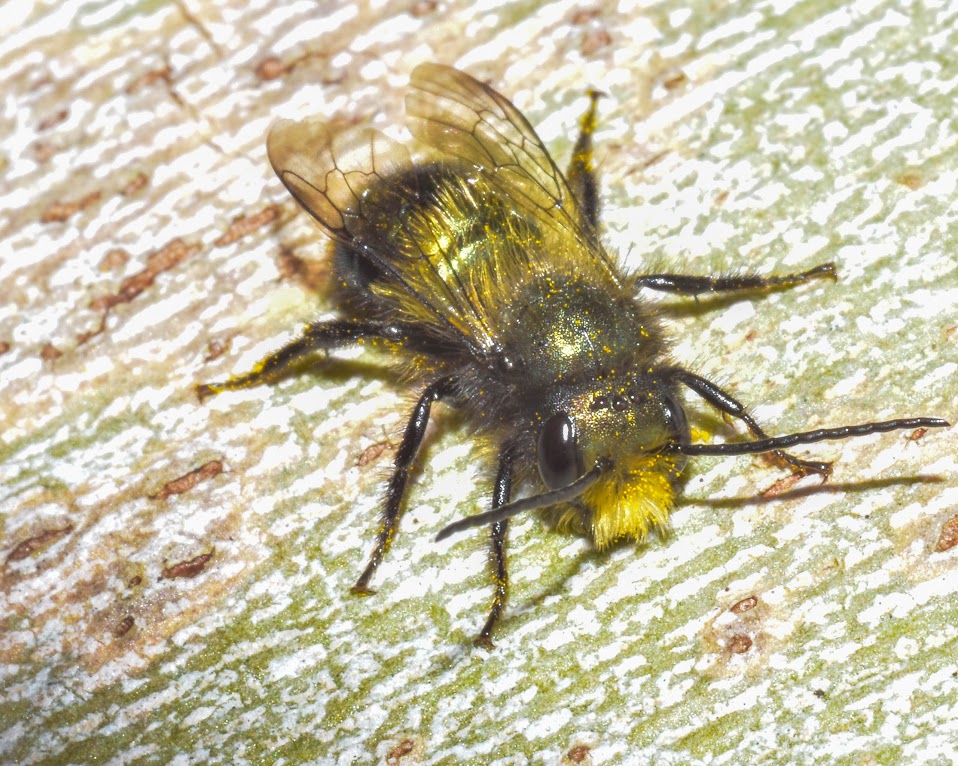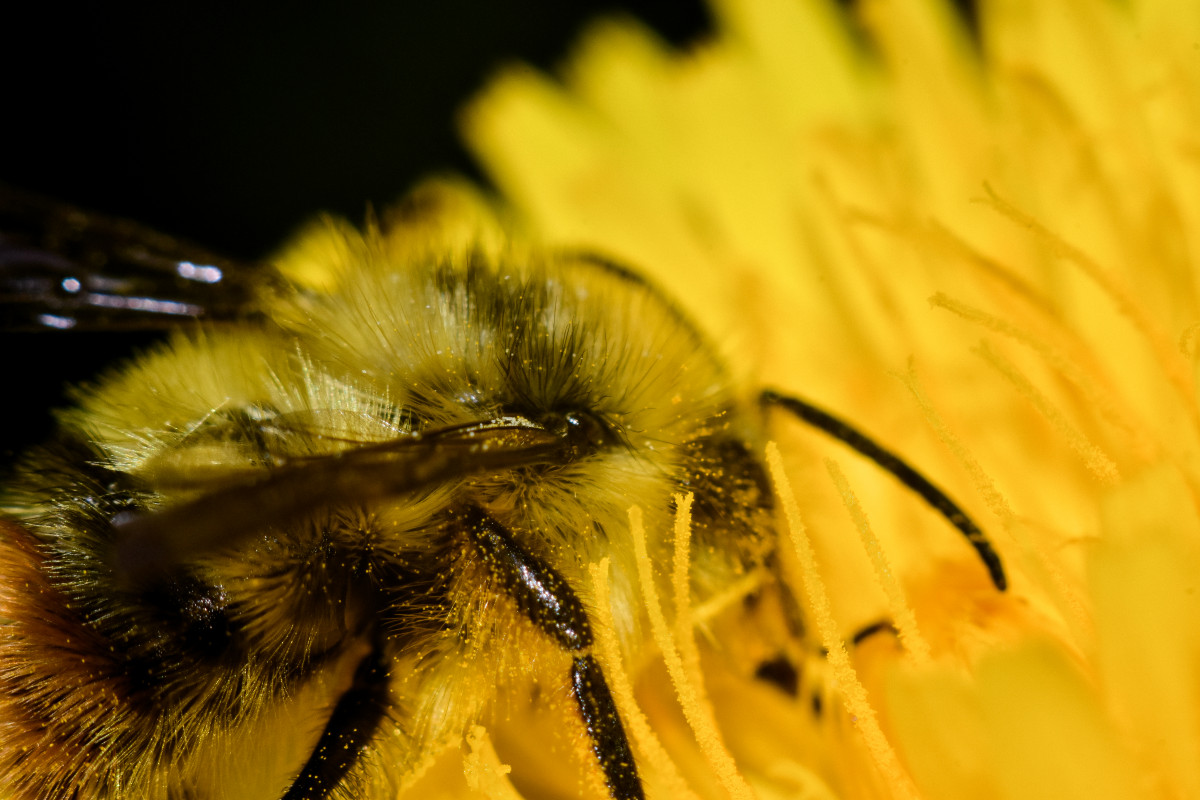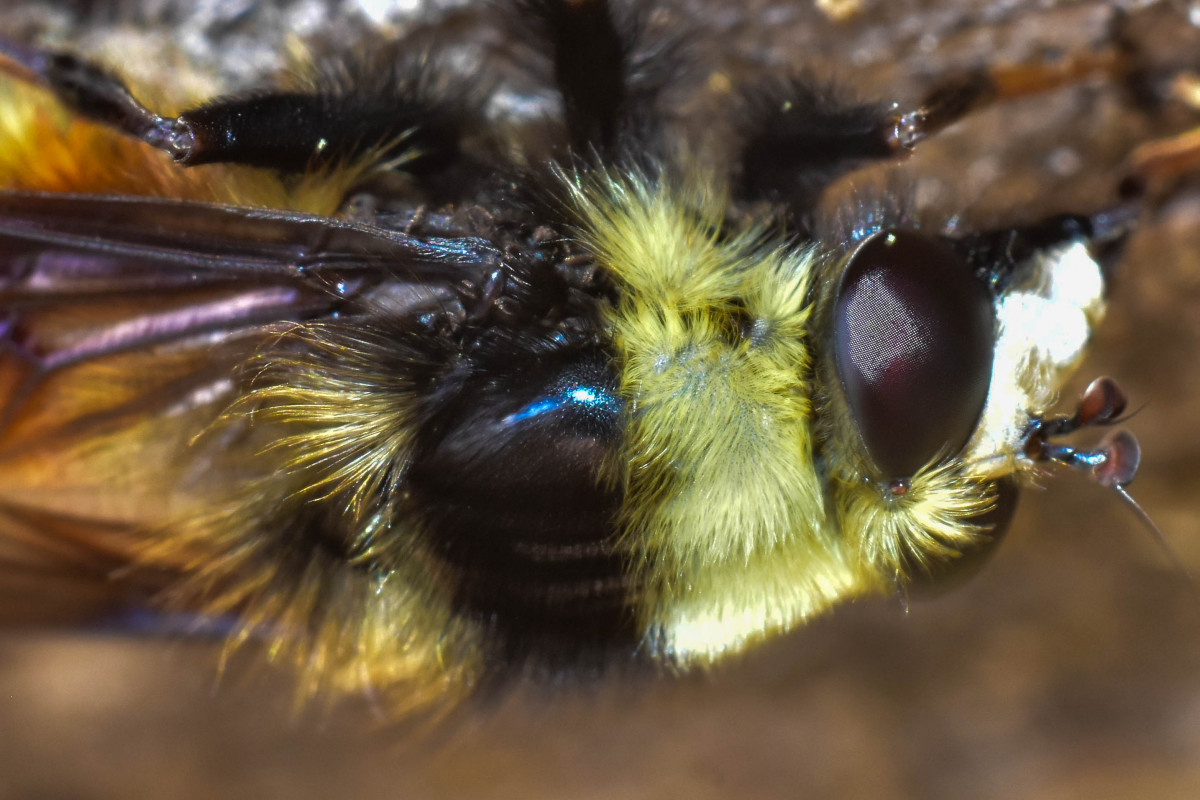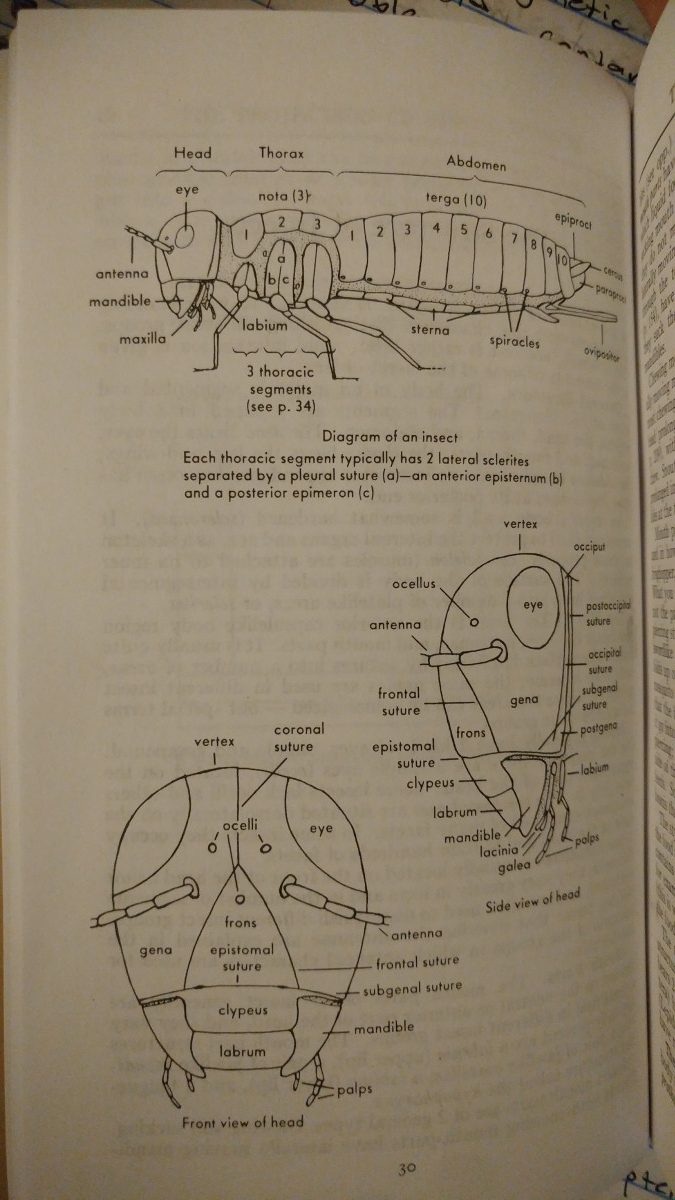The most basic segmentation of insects is that of the head, thorax, and abdomen. All insects have these general structures, although they can vary greatly in individual appearance. All of these parts are sclerotized, or hardened, and the body is divided into plate-like areas, called sclerites.
The head is anterior, and capsulelike. It contains the eyes, antennae, brain, and mouth parts.

Typically, insects have both simple eyes (ocelli, ocellus plural) and compound eyes. Ocelli are simple photoreceptors, and detect light. Complex eyes are used to create full images of the environment.


The antennae of insects vary greatly, and often are a fantastic tool for identification. Bee mimic flies are one example that can easily be differentiated by their antennae. The Criorhina caudata pictured on the bottom has antennae typical of a fly, while the bumblebee it mimics has longer, segmented antennae. While other structures differ as well, such as the mouth parts and wings, this can be something easily referenced.

Insect mouthparts can be quite specialized, however they fall into two major categories: chewing and sucking. Chewing mouthparts have laterally moving mandibles, while sucking mouthparts have been modified into a probiscus, which works similarly to a straw. There are many variations. Bees posses laterally moving mandibles as well as a beak-like tongue for sucking nectar and honey. Piercing insects have small hairs called stylets, which are swordlike in nature. These hairs pierce your kin, and then the probiscus is typically a sheath within the stylets.
Another fundamentally important structure in the head of the insect is its brain. It is primitive in structure, consisting of a body of nerve tissue differentiated into protocerebral (ocular) and duetocerebral (antenullar) regions. Insects lacking antennae do not make the specialization for the deutocerebral region, and it is lacking in those.
The next section is the thorax. It is divided into the prothorax, mesothorax, and metathorax. Each segment usually has a pair of legs attached on the bottom sides. the mesothorax and metathorax typically hold the wings. The wing muscles are attached to the walls of the thorax.

An insects wings, whether they have four, two, or none, are excellent identification tools, and wing venation is often used to identify different vein structures. I will touch on this in more depth in a later post. The four groups of thoratic schlerites include a notum (plural, nota, the dorsal surface), two pleuron (plural, pleura) on each side, and the sternum (plural, sterna, the ventral surface). These can be combined with the prefixes of thoratic segments to identify different positions. For example, the notum of the prothorax is the pronotum.
The final segment of insect bodies is the abdomen. Typically, it contains 11 segments, however the final segment is almost always an appendage. Some insects contain less segmentation, as a result of fusing. Each abdominal segment contains 2 schlerites, the terga (dorsal) and sterna (ventral). Typically the terga extend down the sides and overlap with the sterna. The abdomen also contains much of the organs of the insect, however I will touch upon the details of this in a separate, more detailed posting down the road.
Those are the foundation of insect structures, and while many insects vary greatly in how they present those structures, it is critical to be able to identify them to differentiate between different species, families, and orders. For some, this may be more than enough information for basic insect identification. Understanding the parts of an insect will take you great lengths in beginning identification, and knowing how each order displays these parts differently will ensure you have a good hold on what insects you have around your farm or garden.